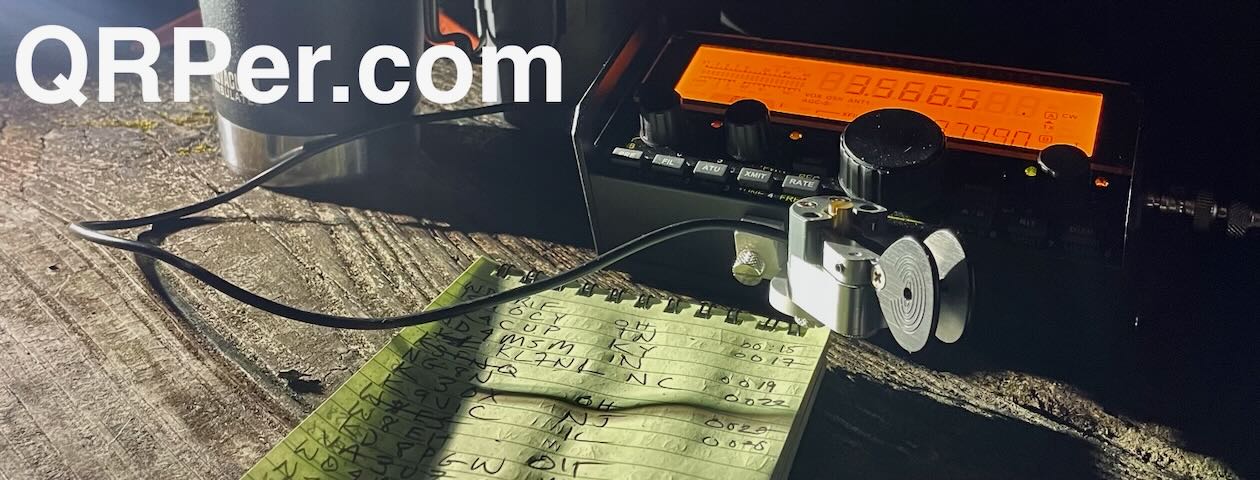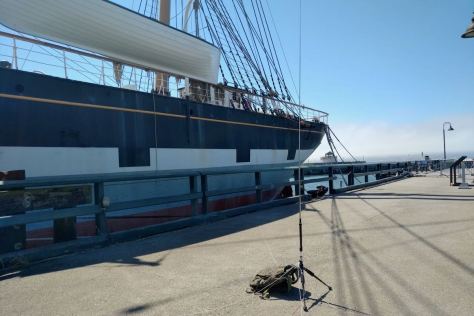by Thomas (DM1TBE as SP/M0KEU/P)
Just like last year, my family and I combined a visit to my parents near Berlin, Germany in the summer with some extra days in the region. As in last year, we went to Łagów (German: Lagow) in Poland. The reasons we chose Łagów again, was a lovely holiday house, directly on a beautiful lake with a beach – all not too far away from Germany – and the good memories we had from our previous stay.
There is also a SOTA summit, which was only activated once in the 5 years when we visited the area last year. As I started with POTA this year and there are also a couple of POTA spots around, I thought it would be worth another visit.
The area around Łagów has been populated since the Bronze Age, i.e. >1000 BC. In 1251, the area came under German rule and the first mention of the town was in 1299. In the 14th century, the Knights Hospitaller built a castle that exists to this date. For the year 1367, it is documented that the convent of Lagow consisted of seven knights and one priest of the order.
At the foot of the fortress, a settlement for craftsmen and servants emerged, secured by defensive walls and two gates.

It is obvious that the builders of the gates did not have modern cars in mind when planing the size of the gates.
During the Thirty Years’ War, one of the longest and most destructive conflicts in European history, Lagow was captured and destroyed by the Swedes in 1640. The hand drawn map below from 1662 already shows Lagow.
During the fighting at the end of World War II in the spring of 1945, the castle and the village did not suffer mayor damages. After the war’s end in 1945, Lagow was placed under Polish administration, and Polish migrants settled in the area. The local Polish authorities expelled the native German residents who had not fled. The spelling of the town’s name was changed to Łagów.
Germany lost large parts of its territory as a consequence of the wars it has started after both major wars of the last century. Lagow was part of the lost territory depicted in the green area below.
The territorial gain probably wasn’t something Poland was very happy about, as the Soviet Union annexed a significant portion of Eastern Poland at the same time and incorporated the previously Polish soil mainly into the Soviet Union republics of Ukraine and Belarus. Consequently, the country experienced an effective westward shift.

Over a long time, expelled Germans were very vocal about claims to return the area to Germany and yet rather quiet about their share in the terrible events that unfolded between 1933 and 1945. Therefore, Germany’s eastern border was not recognized until 1990 by the German government. However, the issues resolved over the time and today, 33 years after the official acceptance of the border, no one I know even thinks about this as an issue any more. Additionally, the Polish side appears to be more relaxed about this topic. I have seen a lot of bilingual information panels and some memorials for former German inhabitants. Nice to see the wounds heal.
The Activations
The holiday house was within the borders of a POTA park. Having a 7-year-old “early bird” son, helped my to wake up early enough to get my 100 contacts for the POTA Early Shift Activator Award. I walked to the edge of the facility and raised my SOTABEAMS Band Hopper III linked dipole for the 20-, 30- and 40 meter bands as soon as my son woken me up and ended my activity around 9:00 local time nearly every day.
Although I had a bunch of other antennas with me, I made all activations during my journey with this antenna and an Icom IC-705.
POTA Rover Warthog Award
The density of POTA-parks is way higher in Poland than in my home region in Southern Germany. With the help and tips from Damian (SP9LEE) I drafted a plan to activate 5 parks on a single day. Continue reading Unveiling Poland: POTA, SOTA, and a Glimpse into History – Part 1: The Rover Award
































































